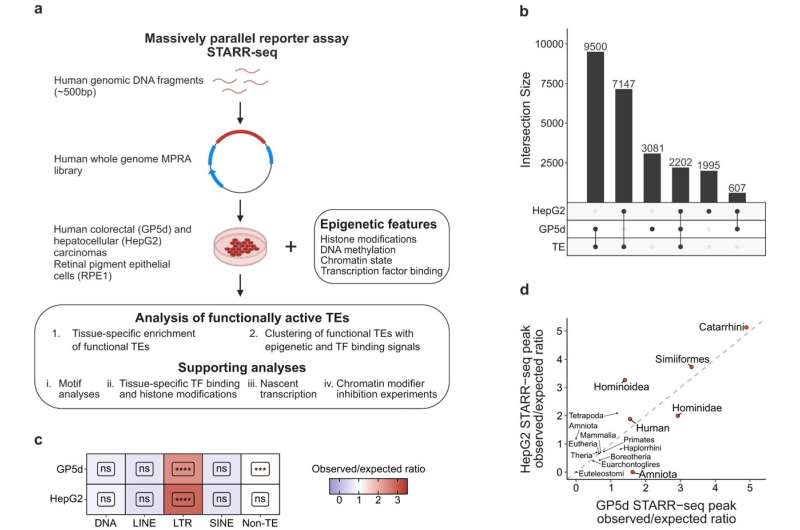This article has been reviewed according to Science X's editorial process and policies. Editors have highlighted the following attributes while ensuring the content's credibility:
fact-checked
peer-reviewed publication
trusted source
proofread
Mobile DNA elements can boost the development of malignant tumors

Nearly half of the human genome is composed of transposable elements, which are sequences of DNA that are able to replicate and relocate in the genome. Previously, transposable elements have been considered "junk" DNA in the human genome. However, research has shown that the ability to replicate and move has enabled these sequences to develop into new regulatory regions during evolution, particularly in early stages of development.
In their study published in Nature Communications, researchers at the University of Helsinki investigated how cancer cells can hijack these mobile elements to boost tumors. The findings revealed new information on the development of cancers.
"We identified specific families of transposable elements that are active in liver and colon cancers. These elements have binding sites for specific transcription factors, which are proteins that control gene expression through the regulatory elements. We demonstrated that these specific transposable elements boost gene regulation in a cancer-specific manner. In other words, different cancer types take over, as it were, the elements for their own regulatory purposes," says Konsta Karttunen, the first author of the study.
Prior research has already shown that transposable elements play a significant role in gene regulation, for example, during human embryonic development. However, because of their replication in the genome, these elements are difficult to study, since the genome contains several copies of nearly identical elements. Cells also actively strive to keep transposable elements silent and non-functional.
"We employed a method called massively parallel reporter assay that can be used to directly identify non-coding regulatory regions in the human genome. Previously, this technique has only rarely been used to investigate the regulatory roles of transposable elements, particularly in the case of cancers. Our research sheds light on regulatory roles more broadly than previously thought," says Postdoctoral Researcher Divyesh Patel from the University of Helsinki.
Mobile DNA elements can be utilized in early cancer diagnostics
A better understanding of mobile elements can help in developing therapies for various cancers.
"The transposable elements activated in cancers could be used as markers that help in diagnosing cancer in its early stages. Moreover, the cellular immune reaction brought about by transposable elements can be utilized in immunotherapies for cancer," says Academy Research Fellow Biswajyoti Sahu from the University of Helsinki, who leads the research group that conducted the study.
More information: Konsta Karttunen et al, Transposable elements as tissue-specific enhancers in cancers of endodermal lineage, Nature Communications (2023). DOI: 10.1038/s41467-023-41081-4


















